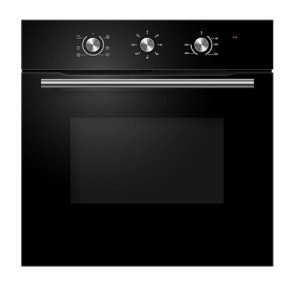10 Websites To Help You Be A Pro In Intergrated Oven And Hob

The Rise of Integrated Ovens and Hobs: An In-Depth Look
In today's busy world, home cooking has undergone a substantial transformation. One development that has profoundly affected kitchen design and performance is the integrated oven and hob, which combines both cooking appliances into a single, cohesive unit. This post checks out the advantages, types, setup factors to consider, and important features of integrated ovens and hobs, as well as providing guidelines for customers considering an upgrade.
What is an Integrated Oven and Hob?
An integrated oven and hob is a kitchen device that combines an oven and a cooking surface area (the hob) into one unit, often designed to be built into the kitchen cabinets. This design supplies a streamlined, modern-day aesthetic and takes full advantage of kitchen area, while also offering performance for cooking and baking. As the choices for open-plan living continue to increase, integrated units develop a structured appearance which mixes seamlessly with kitchen furniture.
Secret Advantages of Integrated Ovens and Hobs
- Space-Saving Design: Integrated systems are best for smaller cooking areas, enabling homeowners to use readily available area effectively without jeopardizing on functionality.
- Aesthetic Appeal: With their structured look, these appliances produce a modern and cohesive kitchen style, getting rid of the need for standalone systems.
- Ease of Use: Integrated ovens and hobs usually come with easy to use interfaces and controls, making them available for cooks of all skill levels.
- Improved Safety: Many integrated systems include safety systems, such as child locks or automatic shut-off functions, which can enhance safety throughout cooking.
- Energy Efficiency: Integrated appliances frequently boast enhanced energy efficiency, minimizing electricity bills and environmental effect.
Types of Integrated Ovens and Hobs
Integrated ovens and hobs are readily available in various configurations to accommodate various cooking needs and choices. Below are some popular types:
| Type | Description |
|---|---|
| Single Oven + Hob | A standalone oven with a built-in hob on top; suitable for compact cooking areas. |
| Double Oven + Hob | Uses 2 ovens for increased cooking capability, coupled with an integrated hob. |
| Steam Oven + Hob | Combines conventional cooking with steam functionality, enhancing food tastes and nutrients. |
| Induction Hob + Oven | Features an induction hob, supplying fast heating and energy performance. |
| Gas Hob + Oven | Integrates the responsiveness of gas cooking with an electric or conventional oven. |
Setup Considerations
When incorporating an integrated oven and hob into a kitchen remodel or brand-new build, several factors require to be thought about:
- Space Requirements: Ensure that there is appropriate space for the combined system and that it satisfies local building policies.
- Ventilation: Adequate ventilation is vital, specifically for gas systems, to prevent buildup of harmful gases.
- Power Source: Determine the proper power source (electric, gas, or dual-fuel) and make sure that the kitchen has the required connections in place.
- Design and Finish: Choose a style and finish that complements the total design of the kitchen. Stainless steel, black, and white are popular surfaces.
- Professional Installation: It is suggested to hire a qualified specialist for setup, particularly for gas systems, to guarantee safety and compliance with building regulations.
Necessary Features to Look For
Customers ought to think about numerous functions when picking an integrated oven and hob:
- Self-Cleaning Options: Many modern ovens come with self-cleaning functions, making upkeep easier and more effective.
- Smart Technology: Some integrated designs offer clever functions such as remote control, cooking guides, and notices.
- Multi-Cooking Functions: Look for ovens that allow different cooking techniques (bake, broil, steam, and so on).
- Safety Features: Ensure that the system includes security features such as an automobile shut-off, heat indications, and protected lock systems.
- User-Friendly Controls: Intuitive touch controls or knobs can boost the cooking experience.
Frequently Asked Questions (FAQs)
1. Are integrated ovens and hobs more energy-efficient than standalone units?
Yes, integrated ovens and hobs are typically designed to be more energy-efficient, making them a sensible choice for the environmentally-conscious consumer.
2. Can I set up an integrated oven and hob myself?
While it is possible for experienced DIY enthusiasts, it is usually suggested to have actually a certified professional carry out the setup, especially for gas appliances, to guarantee safety and compliance with guidelines.
3. Do integrated Electric built in oven and hob packages have the exact same cooking capability as standalone appliances?
Yes, many integrated models are created to match or go beyond the cooking capabilities of standalone systems, providing adequate space for different cooking needs.
4. What is the life expectancy of an integrated oven and hob?
With appropriate care and upkeep, integrated ovens and hobs can last anywhere from 10 to 15 years or more.
5. Are there any brands that focus on integrated ovens and hobs?
Yes, several trustworthy brands, such as Bosch, Neff, Smeg, and AEG, provide a broad range of integrated ovens and hobs that deal with various budget plans and preferences.
The integrated oven and hob represent a substantial advancement in kitchen technology, combining style, performance, and effectiveness into a single device. As homes continue to accept modern-day cooking approaches and aesthetic appeals, these systems will likely acquire much more appeal. Customers ought to consider their cooking habits, kitchen styles, and personal choices when selecting the perfect integrated system, ensuring they enjoy the numerous advantages of these innovative appliances for many years to come.
By understanding the different types, setup considerations, and vital functions of integrated ovens and hobs, homeowners can make informed choices as they invest in their cooking spaces.

